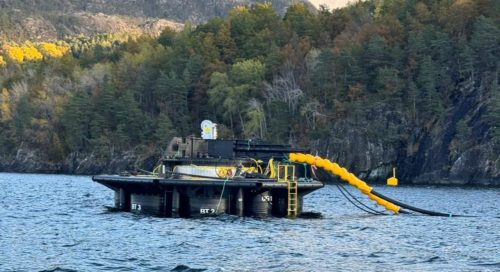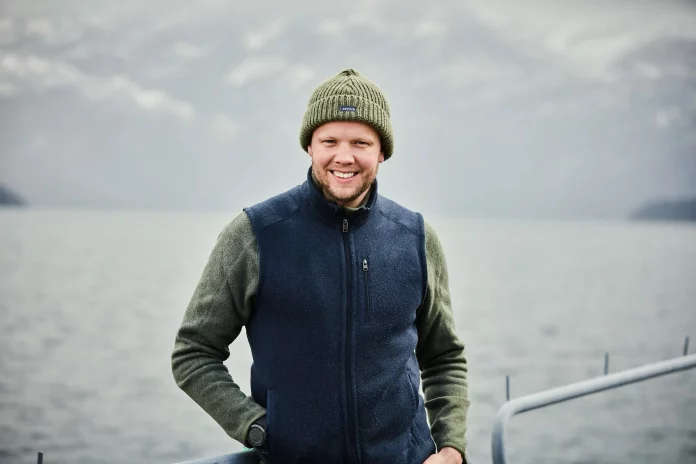Sondre Eide, CEO of Eide Fjordbruk, has been described as the “Elon Musk of salmon farming” by UK newspaper The Times in an article highlighting his efforts to reshape Norway’s aquaculture industry.
Eide is leading the charge toward closed-container salmon farming, an approach he hopes will tackle many of the environmental issues that have plagued traditional open net-pen farms.
“It’s time for a change, for sure,” Eide told The Times, acknowledging the environmental challenges facing Norway’s salmon industry.
As the World’s largest producer of farmed salmon, Norway has faced criticism over the impacts of open-net pens, which are linked to issues such as sea lice, fish escapes, and nutrient pollution in fjord ecosystems.
The article detailed Eide’s work with the Watermoon, a 72-meter submerged closed-container system housed in Hardangerfjord. The Watermoon, Eide explained, is a “moonshot” project for the industry, aimed at making salmon farming more sustainable.

Unlike traditional pens, the Watermoon container is designed to prevent fish escapes, reduce lice infestations, and capture waste, all of which help mitigate the environmental footprint of salmon farming.
“There is tremendous compatibility between closed-container systems and the need for a more sustainable industry,” Eide said, highlighting how the system can minimize parasite issues and pollution. The Times reported that the mortality rate for salmon in Eide’s Watermoon is significantly lower than industry averages, with less than 2% of fish lost compared to the broader industry rate of 16.7%.
Despite the benefits, the high cost of closed containers remains a challenge. Eide acknowledged this issue to The Times, stating, “It’s not economically sustainable to do it… today it’s economically beneficial to have lice and high deaths.” The Watermoon system is estimated to be 30 times more expensive than traditional open nets, making widespread adoption financially daunting without regulatory support.
Eide, who frequently referenced Tesla and SpaceX in the article, told The Times that he believes the Norwegian government could accelerate the shift to closed containment by offering incentives. “Nobody in Norway bought an electric car only because of the environmental factor,” he said. “This doesn’t happen by itself.”
Former Mowi CEO Alf-Helge Aarskog, now working with Eide, also expressed his thoughts on closed containers, telling The Times that certain parts of the industry, such as “wellboats”—vessels used to treat salmon for lice—might resist change because they rely on the current open-net system. “We have created a parasite on the parasite,” Aarskog said.







